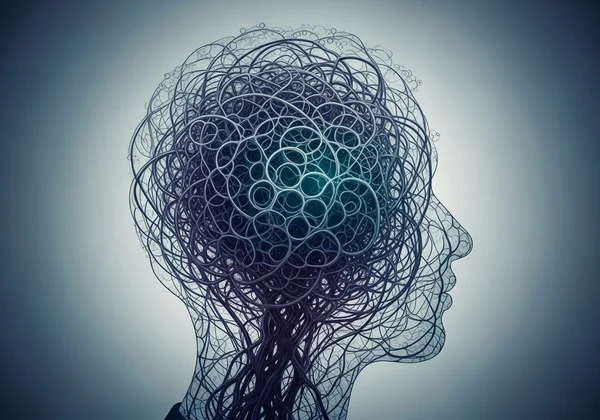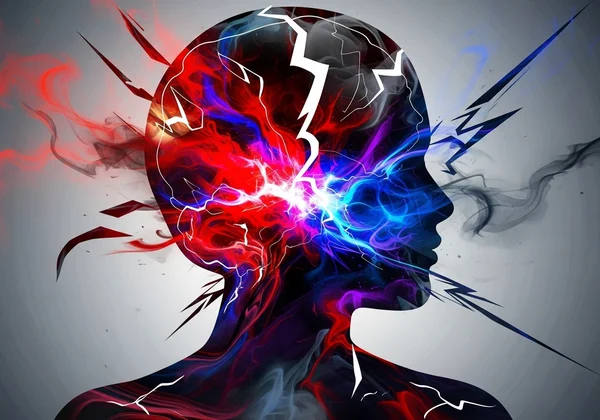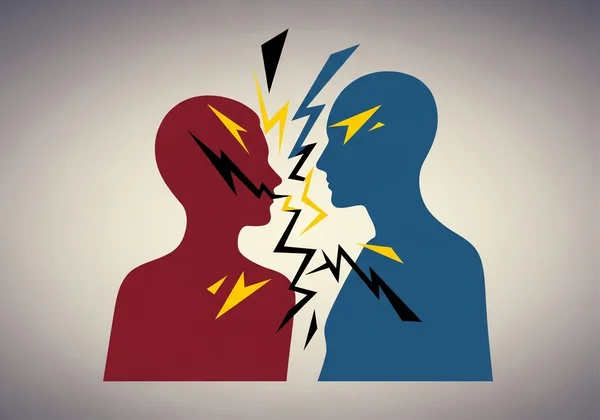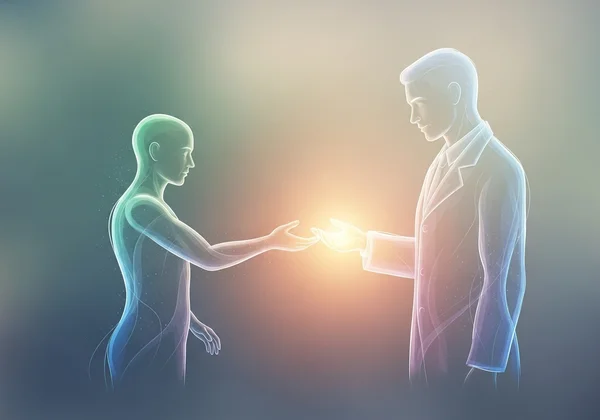识别人格障碍的 10 个迹象:在进行测试前了解这些信号
您是否曾深感不被理解,或者在人际关系和情感生活中反复出现的痛苦模式中挣扎?如果您正在寻找答案,并对某些行为感到困惑,您并不孤单。许多人会问:我如何检查自己是否有人格障碍? 本指南旨在探讨 人格障碍的 10 个迹象,以清晰、富有同情心的方式介绍常见的指标。这是迈向自我理解的第一步,旨在为您提供信息,而不是进行诊断。
了解您独特的人格特质是一个旅程。如果这些迹象让您产生共鸣,那么在一个安全、私密的环境中进一步探索它们可能会有所帮助。一个很好的起点是 迈出第一步,使用一个旨在提供初步见解的初步筛查工具。带着这些知识,您可以开始向前迈进。
理解人格障碍指标
在深入探讨具体迹象之前,建立一个基本认知至关重要。掌握人格障碍指标是什么(以及它们不是什么),可以帮助您以更健康、更具建设性的方式来审视您的观察。这无关乎贴标签,而是关于学习。

究竟什么是人格障碍?
每个人都有独特的人格——一种一致的思维、感受和行为方式。然而,人格障碍是一种更为僵化和普遍的内在体验和行为模式,它显著偏离文化期望。这种模式是持久的、不灵活的,并且始于青少年时期或成年早期。最重要的是,它会导致在社交、职业或其他重要功能领域出现显著的痛苦或损害。这不仅仅是喜怒无常或古怪;它是一种深深根植的模式,影响着一个人生活的几乎每一个方面。
认识这些迹象为何重要
识别潜在的人格障碍迹象并非为了自我诊断。相反,这是一种自我觉察和勇气的体现。通过识别这些模式,您可以开始了解生活中反复出现的困难的根源,无论是在人际关系、工作中,还是在您对自己的认知中。这种意识是寻求适当支持、培养更健康的应对机制并最终改善您整体生活质量的关键第一步。这种洞察力可以培养您对自己和周围人的更大同情心。
常见的行为与情感模式
许多人格障碍的核心在于持久的行为和情感反应模式,这些模式会与外部世界产生摩擦。这些迹象通常在内部表现为情绪动荡,在外部表现为日常互动中的挑战。

1. 强烈的情绪失调和情绪波动
虽然每个人都会经历情绪波动,但这个迹象指的是情绪反应极不稳定且令人难以承受。一个微小的触发因素可能导致极度的愤怒、焦虑或绝望,并持续数小时到数天。这些情绪转变通常是快速的,并且感觉完全失控,使得维持稳定的情绪状态变得困难。
2. 不稳定自我认知和身份认同
这包括持续不稳定的自我形象或身份认同。您可能频繁改变自己的目标、价值观、职业道路,甚至朋友圈。这可能伴随着慢性空虚感,仿佛核心没有一个稳固的“自我”。这种内在的不确定性可能导致难以建立一致的人生道路。
3. 冲动或冒险行为
这种迹象的特点是凭一时冲动,不计后果地行事。它常常出现在至少两个可能自我伤害的领域,例如鲁莽消费、不安全的性行为、药物滥用、危险驾驶或暴食。这些行为通常是由缓解强烈情感痛苦或空虚感的需要驱动的,提供暂时的缓解,但却带来长期的麻烦。
4. 害怕被抛弃和不稳定的人际关系
拼命避免真实或想象中的被抛弃,这是一个关键的指标。这可能导致一种强烈而不稳定的人际关系模式,通常以“分裂”为特征——在理想化和贬低某人之间摇摆不定。您可能很快就与某人建立亲密关系,然后又同样迅速地感到失望或被背叛,从而造成混乱的“推拉”循环。
5. 对自己和他人认知扭曲
这关系到您如何看待自己和周围的人。它可能表现为非黑即白地看待事物,认为人要么是全好要么是全坏。这种认知扭曲使得难以看到人与情境中的细微差别,从而导致误解和冲突。感觉就像您一直在情绪的过山车上。要 探索潜在的特质 如这些,结构化评估可以提供启示。
对人际关系和日常功能的影响
上述内在模式不可避免地会蔓延到外部生活,深刻影响人际关系、社交互动以及有效日常运作的能力。

6. 持续的人际冲突
由于情绪失调、害怕被抛弃和认知扭曲,人际关系充满冲突。您可能会发现自己频繁争吵,经历反复的分手,或者感觉被家人、朋友和同事持续误解。这不仅仅是偶尔的戏剧性事件;这是一种持续的动荡模式。
7. 社会退缩或回避
对某些人来说,害怕被拒绝、批评或尴尬的程度如此之大,以至于他们会完全回避社交场合。这不仅仅是害羞;这是积极地退出工作、学校或您曾经享受的社交活动。这种孤立会加剧孤独和空虚感,形成恶性循环。
8. 缺乏同理心或悔意
这个迹象表明持续难以体会或理解他人的感受和需求。您可能会显得冷酷、无情或不关心,即使那不是您的本意。这也可能包括在伤害他人后缺乏悔意,因为您可能难以理解自己行为的情感影响。
9. 夸大的自我重要感
这是对自己重要性的膨胀感,对过度的关注和赞美的深切需求,以及相信自己是特殊和独特的信念。这种自大往往掩盖了脆弱的自尊。您可能会夸大自己的成就,认为自己有权获得特殊待遇,并且在未获得您认为应得的赞赏时感到愤怒。
10. 过度的猜疑或不信任
这个迹象的特点是普遍而毫无根据的不信任感。您可能时刻保持警惕,即使没有证据,也认为人们试图伤害、欺骗或利用您。这使得几乎不可能建立亲密、信任的关系,因为您可能会误解无害的言论或事件,认为它们具有邪恶的隐藏含义。
何时寻求专业指导
识别出一个或多个这些迹象并不意味着您肯定患有人格障碍。理解背景至关重要,而专业的见解提供了无可替代的清晰度。
区分特质与障碍
区分具有某些人格特质和患有临床障碍至关重要。许多人在某些时候都会冲动、敏感或多疑。当这些特质变得僵化、长期存在并导致显著的功能障碍或主观困扰时,才会被诊断为障碍。关键区别在于其严重性、持续性和对您生活造成的负面影响。
专业评估的重要性
如果这份清单与您的经历深有共鸣,那么最负责任且富有同情心的下一步就是寻求专业评估。只有合格的心理健康专业人士,如精神科医生或心理学家,才能提供准确的诊断。像我们 保密筛查工具 这样的在线工具,在您进行专业咨询前,是收集初步见解和整理思绪的绝佳方式。它们可以为获得专业支持搭建桥梁,引导您的旅程,而不是结束它。

迈出理解人格特质的下一步
承认这 10 个迹象是更好地了解自己的一个重要而勇敢的一步。它表明您生活中持久的模式可能隐藏着更深的根源,值得您关注和关爱。这种理解可以帮助您获得清晰的认识。
如果这些描述与您产生共鸣,请不要气馁。相反,请将其视为开启新篇章的机会。您今天就可以采取简单、保密的步骤。我们邀请您在我们的网站上 开始免费的人格障碍测试。我们基于科学的筛查将帮助您探索这些特质,并提供初步见解,指导您下一步的行动并提供支持。
关于人格障碍迹象的常见问题解答
1. 我如何检查自己是否有人格障碍?
获得正式诊断的唯一途径是通过合格的心理健康专业人士进行的全面评估。 然而,一个好的起点是自我反思和知识学习。您可以从观察自己长期的行为和情绪模式开始。使用基于科学的在线筛查工具也可以提供有价值的初步见解,并帮助您整理疑虑,以便与专业人士讨论。
2. 什么是最准确的人格障碍测试?
最准确的评估是由持证专业人士进行的临床评估,通常包括结构化访谈和经过验证的心理测量工具。 像 免费人格障碍测试 这样的在线测试应被视为初步筛查工具。它们旨在根据既定标准(如《精神疾病诊断与统计手册》第五版中的标准)识别潜在的关注领域,但不能替代临床诊断。
3. 人格障碍的 10 个迹象是什么?
如本文所概述,10 个常见迹象包括: 强烈的情绪失调、不稳定的自我认知、冲动行为、害怕被抛弃、认知扭曲、持续的人际冲突、社会退缩、缺乏同理心、自大和过度猜疑。这些迹象必须是长期、普遍模式的一部分,才能被视为指标。
4. 什么可以触发人格障碍?
人格障碍被认为是由遗传易感性与环境因素的复杂相互作用而产生的。 关键的触发因素或促成因素通常包括童年创伤(如身体、情感或性虐待)、忽视、有精神疾病家族史以及在不稳定或不被认可的环境中长大。这些因素会塑造适应不良的应对机制的发展,并随着时间的推移而根深蒂固。
5. 人格障碍患者的行为是怎样的?
行为可能因具体障碍而异,但一个共同点是导致人际关系和其他生活领域出现严重问题的持续行为模式。 这可能表现为极端的情绪反应(边缘型人格障碍 (BPD) 特征)、对赞美的需求和缺乏同理心(自恋型人格障碍 (NPD) 特征),或极端的社交回避(回避型人格障碍 (AvPD) 特征)。他们的行为通常是他们强烈内心体验和对世界扭曲认知的反映。